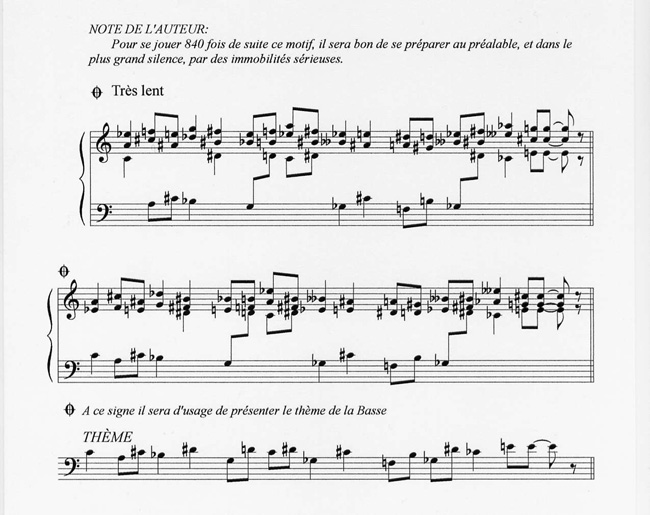If you sense I’m in microtonal heaven lately, that’s pretty much true. Except for a six-minute piano piece, I haven’t written one of the normal pitches since December. One event that I would have highlighted in advance, but somehow I didn’t have the final information for, was a microtonal performance of Satie’s Vexations that took place last Sunday at the Against the Stream Buddhist Meditation Center in Los Angeles. Pianist Aron Kallay and guitarist John Schneider asked seventeen microtonalists, myself included, to come up with a microtonal tuning for Vexations that would take into account Satie’s peculiar notation, which spells the same piano notes differently in exasperating ways. You probably know the original version:
As written, there are 21 different pitches, D coming back as E-double-flat, C differentiated from B-sharp, and so on. Most of the chords are diminished triads. At first I spelled them all in regular minor thirds of 6/5, for groups of 1/1, 6/5, 36/25. That was logical and pretty but not terribly interesting, so I pushed to differentiate some of the diminished triads a little more. The problem is, sometimes Satie overlaps his diminished triads notationally, the longest chain of them being A#-C#-E-G-Bb-Db. I felt I had to distinguish A# from Bb and C# from Db. So I kept going up higher in the harmonic series, using harmonics I’d never played with before, and for those six pitches, I ended up with diminished-triad ratios of 5:6:7, 12:14:17, 28:34:41, and 34:41:49. So it turned into my first venture into 41-limit tuning (my teacher Ben Johnston has gone higher), and every chord in my retuned version is a part of a harmonic series, sort of the way I’m thinking lately. You can hear my results, and those of several of the other microtonalists, here.

